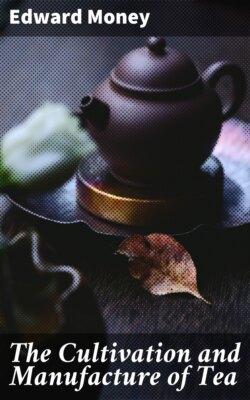Читать книгу The Cultivation and Manufacture of Tea - Edward Money - Страница 4
На сайте Литреса книга снята с продажи.
CHAPTER I.
PAST AND PRESENT FINANCIAL PROSPECTS OF TEA.
ОглавлениеTable of Contents
Will Tea pay? Certainly, on a suitable site, and in a good Tea climate; equally certainly not in a bad locality with other drawbacks.
Why, then, has Tea only paid during the last few years (?) Simply because nothing will pay, which is embarked on without the requisite knowledge; and this was pre-eminently the case with Tea.
Nothing was known of Tea formerly, when everybody rushed into it; not much is known even now. Still, with those drawbacks and many others, the enterprise has survived, and it is very certain the day will never come that Tea cultivation will cease in India.
I believe there is nothing will pay better than Tea, if embarked on with the necessary knowledge in suitable places, but failing either of these success must not be hoped for.
It was madness to expect aught but ruin, under the conditions which the cultivation was entered on in the Tea-fever days. People who had failed in everything else were thought quite competent to make plantations. ’Tis true Tea was so entirely a new thing at that time, but few could be found who had any knowledge of it. Still, had managers with some practice in agriculture been chosen, the end would not have been so disastrous. But any one—literally any one—was taken, and tea planters in those days were a strange medley of retired or cashiered army and navy officers, medical men, engineers, veterinary surgeons, steamer captains, chemists, shop-keepers of all kinds, stable-keepers, used-up policemen, clerks, and goodness knows who besides!
Is it strange the enterprise failed in their hands? Would it not have been much stranger if it had not?
This was only one of the many necessities for failure. I call them “necessities” as they appear to have been so industriously sought after in some cases. I must detail them shortly, for to expatiate on them would fill a book.
No garden should exceed 500 acres under Tea. If highly cultivated one of even half that size will pay enormously, far better than a larger area with low cultivation. Add, say, 400 acres for charcoal, &c., making 900 or say 1,000 acres the outside area that can be required, and the outside that should ever have been purchased for any one estate. Instead of this, individuals and Companies rushing into Tea bought tracts of five, ten, fifteen, and twenty thousand acres. The idea was that, though it might not be all cultivated, by taking up so large an area all the local labour where there was any would be secured. Often, however, these large tracts were purchased where local labour there was none, and what the object there was is a mystery. I conceive, however, there was a hazy idea that if 500 acres paid well, 1,000 would pay double, and that eventually even two or three thousand acres would be put under Tea and make the fortunate possessor a millionaire. In short, there were no bounds, in fancy, to the size a garden might be made, and thus loss No. 2 took place when absurdly large areas were bought of the Government and large areas cultivated.
The only fair rules for the sale of waste lands were those of Lord Canning, which the Secretary of State at home, who could know nothing of the subject, chose to modify and upset. Instead of Rs. 2–8 per acre for all waste lands (by no means a low price, when the cost of land in the Colonies is considered) and that the applicant for the land (who had, perhaps, spent months seeking for it) should have it, the illiberal and unjust method of putting the land up to auction with an upset price of Rs. 2–8 was adopted, the unfortunate seeker, finder, and applicant, through whose labour the land had been found, having no advantage over any other bidder. The best, at least the most successful plan in those days, though as unfair and illiberal as the Government action, was to wait till some one, who was supposed to know what good Tea land was, applied for a piece, and then bid half an anna more than he did, and thus secure it. It paid much better than hunting about for oneself, and it was kind and considerate on the part of Government to devise such a plan!
In those fever days, with the auction system, lands almost always sold far above their value. The most absurd prices, Rs. 10 and upwards per acre, were sometimes paid for wild jungle lands. Tracts, which natives could have, and in some cases did lease from Government for inconceivably small sums, representing, say, at thirty years’ purchase, 4 annas per acre, were put up for auction with a limit of Rs. 2–8, and sold perhaps at Rs. 8 or 10 per acre. Had the Government given land gratis to Tea cultivators the policy would have been a wise one. To do what they did was scarcely acting up to their professed wish “to develope the resources of the country.”
Since the above was written, new rules have been published for the sale of waste lands. The objectionable auction system is continued, and the upset price is much enhanced, as follows:—
